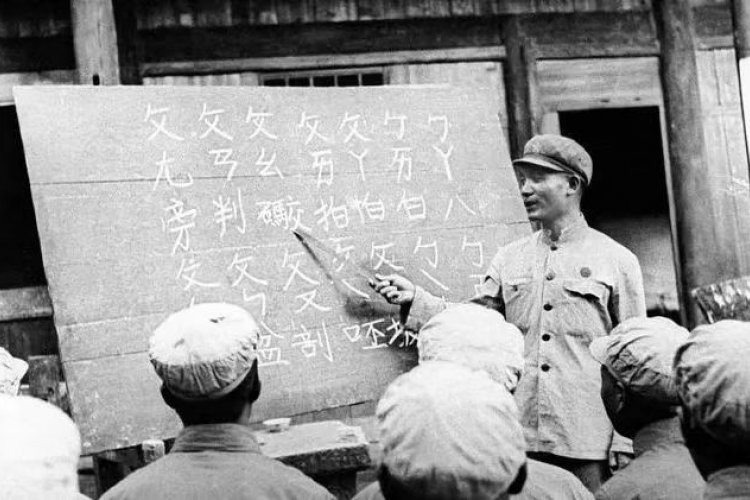Unpacking Three of Beijing's Murkiest Historical Mysteries
Beijing is host to a vibrant mix of old and new, making it the kind of place that begets more questions every time we go in search of answers and constantly leaves us wanting more. Seasoned expats are most likely familiar with well-known facts about the city, little tidbits they’ve picked up from years on the street. But even those places that seem well-trodden are shrouded in an air of mystery. From hidden corners of the Forbidden City to why Guijie is one of the most popular food streets in Beijing, here are a few lesser-known facts about the place we call home.
What is the most secretive part of the Forbidden City?
Contrary to popular belief, the most obscure place in the Forbidden City is not the imperial ice cellar. Instead, that title goes to the east secondary back room of Yudetang in the Wuying Hall, otherwise known as the Turkish bath.
As one of only two Yuan dynasty buildings in the Forbidden City, this space was initially used as the bathroom for the interior ministry. In the Ming dynasty, it became the emperor’s private bathhouse, while in the Qing dynasty, it was converted into a paper steaming office for bookmaking. Although its exterior of red walls and golden tiles are in keeping with the aesthetics of other buildings in the Forbidden City, its interior will make you think otherwise.

Upon entering the unique room, you’ll feel as though you traveled to another world. Inside, the red walls give way to white brick, the square room slowly tapers into a single circular opening in the ceiling, and the entire construction seems more akin to Arab-influenced architecture than anything from Imperial China. Simply put, the whole effect is enough to make you doubt whether you’re still in the Forbidden City at all.
Why is Guijie exclusively known as a food street?
Beginning at Yonghegong Street and extending all the way east to Dongzhimen and the Second Ring Road, Guijie is a paragon of Beijing’s dining scene. But how did Guijie, also known as Ghost Street, develop into a foodie paradise and the city's most iconic all-night dining spot?
Since the Qing dynasty, the street now known as Guijie was used to transport timber into Beijing. As time went on, a field of cemeteries began to surround the outside of the street, likely on account of the dead, now in coffins, being buried nearby to the woodyards. This in turn gave rise to a booming funeral home industry along the main thoroughfare.

In the early days, grocery, vegetable, and fruit vendors would post up in the middle of the night with kerosene lamps lighting the street. From a distance, their stalls were dim and gloomy, a mood that was only heightened by the backdrop of funeral homes. As a result, an eerie atmosphere haunted Dongzhimen, hence its initial designation as "Ghost Town" (鬼市).
After more and more shops decided to try their luck in Ghost Town, most seemingly couldn't shake the curse of an over-saturated market. Restaurants, however, seemed unaffected and consistently outperformed other businesses. And in a prophetic nod to its current reputation, despite a dearth of customers during the day, the restaurants were bustling at night.

Around the 1980s, eager to disassociate this new culinary mecca from the less appealing connotations of ghoulish diners, Beijing’s Commerce Commission decided that the character "簋," a type of cooking vessel, and more practically a homonym for "ghost" (鬼), would be a more kosher and inviting name.

Despite opposition from many of the street’s restaurateurs, fearful that the name change would result in bad feng shui, the name was officially changed and a large bronze statue of a gui (the cooking vessel kind, not the ghost kind) was erected to remind everyone that this was no longer the "ghost town" of yore.
Why is the emperor’s bedroom so small?
Perhaps due in part to the influence of various films and television dramas over the years, people are often led to believe that the emperor’s bedroom in the Forbidden City should have been the very embodiment of extravagance and opulence. In reality, the humble abode was in fact only 10sqm.
Why in the world would the ruler of one of the largest countries in the world live in such a small room? For an answer you must look to the Chinese sayings 屋大人少,是凶屋 wū dàrén shǎo, shì xiōng wū, which translates to "a big house with few inhabitants is a bad house," and 房子大吸走人气 fángzi dà xī zǒu rénqì, or "big houses drain the vitality of their occupants." As such, every dynasty’s emperor resided in bedrooms that were 10sqm or smaller, believing they would enjoy good health and greater longevity because of it.

As superstitious as it might sound, this statement holds an undeniable amount of truth according to Chinese epistemology. Essentially, the energy emitted by the human body is what the Chinese call "vitality," meaning that when a person uses too much energy to fill the space of a large house, there will be an equal amount of damage done to that body. Likewise, if the body consumes more energy and its natural constitution becomes weaker, one risks a precipitous decline in productivity leading to the diminished fertility of one’s land. Given how little square meterage you get for your money in Beijing nowadays, this is certainly a rule we can live by.
READ: Story of the 'Jing: When Beijing's Most Famous Sites Opened Their Doors to the Public
Images: Janine M. (via Unsplash), dom.org.cn, wikimedia.com, chinawhisper.com, china.org.cn
Related stories :
Comments
New comments are displayed first.Comments
![]() BauLuo
Submitted by Guest on Tue, 09/20/2022 - 21:44 Permalink
BauLuo
Submitted by Guest on Tue, 09/20/2022 - 21:44 Permalink
Re: Unpacking Three of Beijing's Murkiest Historical Mysteries
Well I have a few murky mysteries in my past, none of which required murder on my part, a couple sadly in suicide, Nonetheless I never did re-tread my sneakers, and Tuesday will get you Friday, if you have a smile on yer face. Toodaloo! Ba!
Validate your mobile phone number to post comments.







